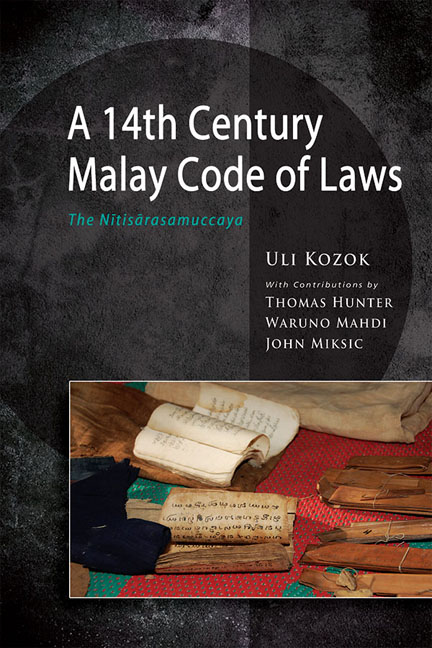Book contents
- Frontmatter
- Contents
- List of Tables
- List of Figures
- Abbreviations
- Preface
- About the Contributors
- 1 Pusaka: Kerinci Manuscripts
- 2 Kerinci and the Ancient History of Jambi
- 3 Tanjung Tanah Manuscript TK 214
- 4 Script and Language of the Tanjung Tanah Manuscript
- 5 Tanjung Tanah Manuscript TK 215
- 6 Sanskrit in a Distant Land: The Sanskritized Sections
- Bibliography
- Index
- Nalanda-Sriwijaya Series
- Images of TK 214
6 - Sanskrit in a Distant Land: The Sanskritized Sections
Published online by Cambridge University Press: 19 May 2017
- Frontmatter
- Contents
- List of Tables
- List of Figures
- Abbreviations
- Preface
- About the Contributors
- 1 Pusaka: Kerinci Manuscripts
- 2 Kerinci and the Ancient History of Jambi
- 3 Tanjung Tanah Manuscript TK 214
- 4 Script and Language of the Tanjung Tanah Manuscript
- 5 Tanjung Tanah Manuscript TK 215
- 6 Sanskrit in a Distant Land: The Sanskritized Sections
- Bibliography
- Index
- Nalanda-Sriwijaya Series
- Images of TK 214
Summary
The purpose of this chapter is to explore in detail several sections of the Tanjung Tanah manuscript TK 214 (TTms) that are rich in Sanskritized vocabulary. I propose referring to these sections of the TTms as “framing sections” and understanding them as playing a role in indexing the TTms to a specific socio-political context, to a centre of power from which authority was transmitted to its geopolitical peripheries through epistolary and documentary means. In this view, the TTms has much in common with the surat cap whose dissemination dominated Minangkabau political discourses in the seventeenth and eighteenth centuries, but is composed in a form that reflects an older model of state organization like that described by Lieberman (2003) under the term “charter state”.
The initial hypothesis of this chapter is that the framing sections of the TTms constitute an important means for conferring authority on the compiler of the manuscript, first in terms of his right to participate in the dissemination of a legal document and, following upon this, his right to exercise a degree of political power within a local domain. A major aim of this chapter is thus to elucidate the text-building elements of the TTms that appear to be employed to create a textual basis for a form of political authority, then to begin to understand the nature of this authority. Another aim of this chapter will be to demonstrate how a comparison of the framing and code of laws (TTms 4.2–28.7) sections of the manuscript brings to light the iconic nature of the TTms. This is to say that the order of parts in the manuscript recapitulates the step-wise order of the “great convocation” (sidang mahātmya) that drew up the code of laws, and in that sense represents a copy of the event that directly reflects its character and chronological sequence.
Another important question to be examined in this chapter is the question of how and to what extent the framing sections of the TTms can be considered “Sanskritized”. From the start we should be clear that the framing sections do not reflect the use of Sanskrit as such, either in terms of its being one idiom within a larger configuration of “hyperglossia”, or in terms of a “correct” orthography preserving the spelling conventions of classical Sanskrit.
- Type
- Chapter
- Information
- A 14th Century Malay Code of LawsThe Nitisarasamuccaya, pp. 281 - 379Publisher: ISEAS–Yusof Ishak InstitutePrint publication year: 2015



